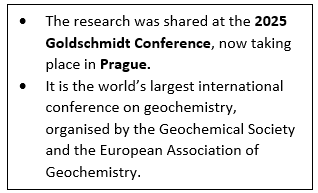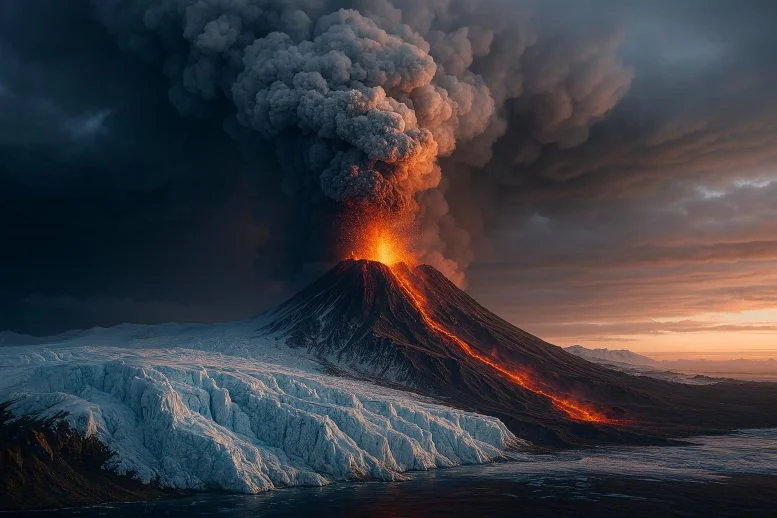Syllabus
GS 1: Salient features of world’s physical geography
Context:
According to a new study, the increase in melting glaciers and ice caps could lead to more frequent and stronger volcanic eruptions.
Key Highlights from the study

- The study also said that West Antarctica faces the biggest risk of more volcanic eruptions.
- Around 100 volcanoes are buried under thick ice there.
- This ice could melt in the coming decades or centuries because of rising global temperatures.
- Pablo Moreno-Yaeger from the University of Wisconsin-Madison said that other places like parts of North America, New Zealand and Russia could also see more volcanic activity.
Climate change and Volcanic Eruption
- Scientists first suggested in the 1970s that melting ice could affect volcanic eruptions. Normally, the weight of ice puts pressure on underground magma, keeping it in check.
- When glaciers melt, the pressure reduces, allowing magma and gases to expand, which can lead to explosive eruptions.
- In Iceland, during the last major deglaciation (15,000–10,000 years ago), volcanic eruptions increased 30 to 50 times compared to now.
- Less pressure from ice loss also makes rocks melt more easily, producing more magma.
- Rain and precipitation, which are affected by climate change, can seep into the ground and trigger eruptions by reacting with the magma system.
What is proposed by New Study
- A new study supports earlier findings about how melting ice affects volcanic activity.
- It studied Chile’s Mocho Choshuenco volcano to examine volcanic rocks from before, during and after the last ice age.
- Between 26,000 and 18,000 years ago, a thick ice sheet over the volcano reduced eruptions by putting pressure on magma.
- This pressure caused a large magma reservoir to build up 10–15 km below the surface. When the ice melted around 13,000 years ago, the stored magma erupted explosively.
Volcanic Risks in a Warming World
- Volcanic eruptions can cool the Earth by releasing ash and dust that block sunlight.
- They also release sulfur dioxide which forms sulfuric acid aerosols in the stratosphere.
- These aerosols reflect sunlight, causing temporary global cooling that can last up to three years.
- Over time, the droplets become heavy and fall back to Earth.
- But continuous eruptions can also release greenhouse gases like carbon dioxide and methane which increase global warming.
- This can create a vicious cycle — rising temperatures melt more ice, which may cause more eruptions, leading to further climate change.
Mains Question Discuss how volcanic activity influences global climate. Explain both the cooling and warming effects of volcanic eruptions, and assess the potential impact of climate change on future volcanic activity. (10M, 150M)

